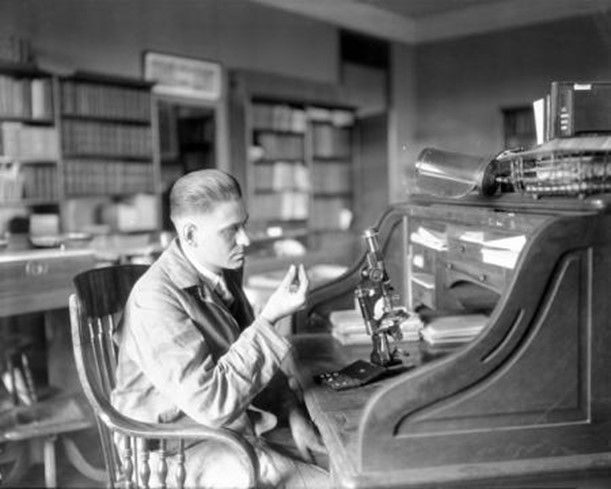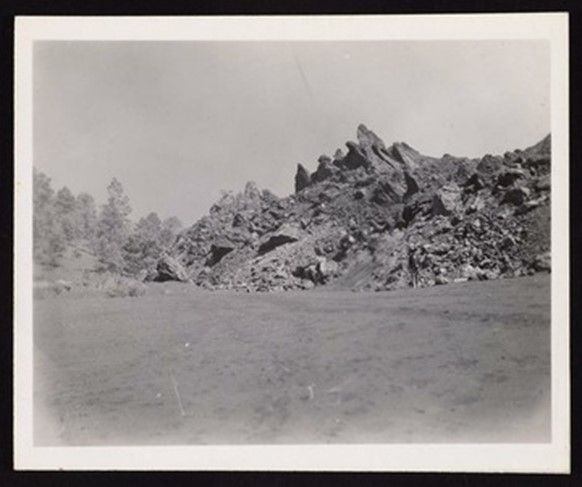MSDC’s Annual Student Award… and William F. Foshag
by Betty Thompson, MSDC Co-Webmaster
For several decades, MSDC has given an annual award to a geology student at the one DC institution offering that degree: the George Washington University. Who is “Foshag,” whose name is on the award? How do you even pronounce it?
As I just found out, Dr. Foshag had enormous impact nationally, internationally, and in particular, at the Smithsonian, and maybe for our club, as well. And you say it “FOE shag” – a long O and the accent on the first syllable.

William Frederick Foshag (March 17, 1894 – May 21, 1956) was a pivotal leader at the Smithsonian. In 1919, with his fresh A.B. degree in chemistry from the University of California at Berkeley, Foshag was appointed assistant curator in the Division of Mineralogy and Petrology at The U.S. National Museum, now the Smithsonian National Museum of Natural History. He remained at the Smithsonian until his death.
Foshag developed an intense, lifelong interest in minerals as an undergraduate, under the influence of distinguished mineralogist Arthur S. Eakle. The interest was fueled by Foshag’s work at the Portland Cement Company, located in the outstanding mineral locality of Crestmore, CA. Foshag was awarded a Ph.D. from UC-Berkeley in 1923. In 1929 he was promoted to curator of the Smithsonian Department of Geology, and in 1948 he became head curator. He had enormous impact in that position, which he held until his death.
As staff, curator, and head curator, Dr. Foshag tremendously expanded the Smithsonian’s collections of minerals and gems as well as its endowment and scientific reach. His friendly relationship with John A. Roebling was pivotal in the 1927 bequest to the Museum of the immense Washington Roebling mineral collection (about 16,000 specimens) and an endowment of $150,000 that continues to fund collection maintenance. Both the Roebling collection (which included the fabulous “Steamboat” elbaite) and the 9,000-mineral collection of Frederick Canfield (donated in in 1927, with a $50,000 endowment) ranked among the world’s best private collections of gems and minerals.
The Roebling family, through its Fund, supported Dr. Foshag’s extensive research in Mexico, 1926-1950s. Foshag was key to the first scientific documentation of the complete lifecycle of a volcano, due to his being in Mexico in 1943 when the Parícutin volcano first erupted and continuing those studies until it became extinct in 1952. During World War II, the USGS relied on Foshag’s knowledge of Mexico for a cooperative project with Mexico to discover and develop strategic mineral deposits in Mexico.

His work in Mexico is just one example of his wide-ranging scientific work in
mineralogy, geology, chemistry, volcanology, gemology, and as a student of
meteorites. Another example: In 1946 Dr. Foshag and Edward P. Henderson
worked with the U.S. Army in Japan, supervising the grading, classification, and
evaluation of diamonds and gems that the Japanese people had given their
government to fund the war effort – worth over $25 million in 1946 dollars.
Dr. Foshag published nearly 100 papers and described 13 new minerals. The mineral foshagite from Crestmore, California, was named in his honor by his early mentor, Arthur S. Eakle.
His interests extended far beyond mineralogy and geology. For example, he delved
into the archaeology of Latin America; his collection of artifacts was later acquired
by the National Gallery of Art. Curators of the Robert Woods Bliss collection (some of which can be seen at Dumbarton Oaks in Washington, DC) consulted with him on jade and other archaeological materials.
Dr. Foshag was a fellow of the Geological Society of America, a charter fellow of the
Mineralogical Society of America, and president of the latter in 1940. I wonder
whether he influenced the founding of our Mineralogical Society of Washington, DC. More on that later, if more info emerges.
